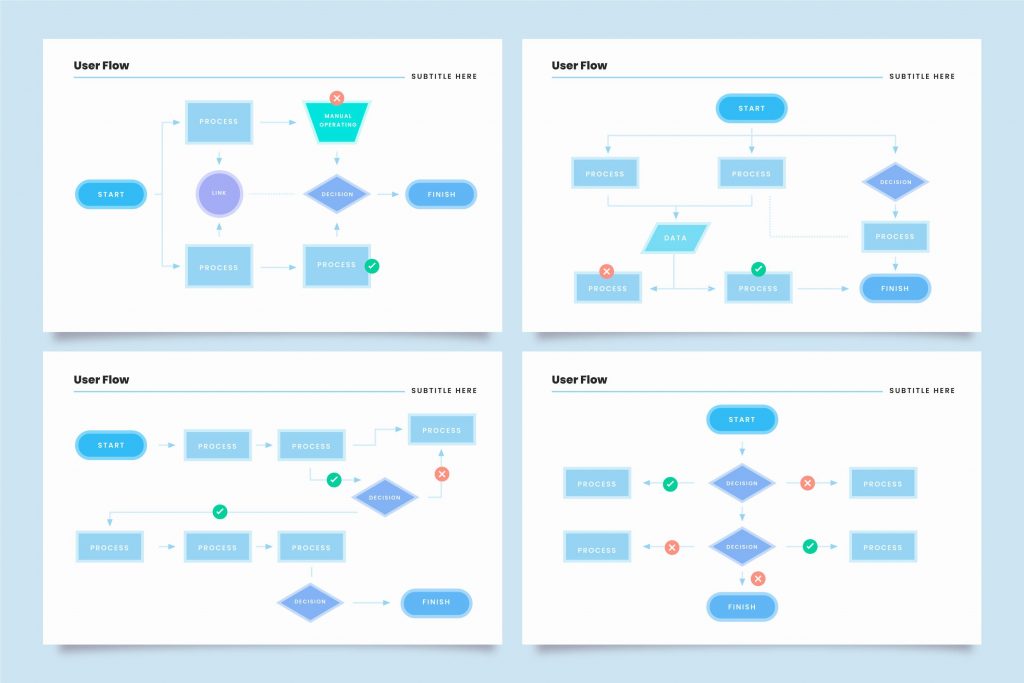
Understanding your processes is crucial to ensure efficiency, identify bottlenecks, and enhance performance. This is where the art and science of process mapping come into play.
Process maps are visual representations that illustrate the sequence of activities that make up a process. They are fundamental in managing business operations and enhancing workflow.
What is Process Mapping?
Process mapping, at its core, is the act of creating a flowchart or diagram to signify a process’s workflows. It visually describes the flow of activities, the roles or departments involved, and the sequence or steps that lead to the completion of a particular process. Process mapping aims to provide clear process documentation for organisations, allowing a deep understanding of business procedures and facilitating improvements.
Why is Process Mapping Important?
Clarity and Understanding
Process maps provide a clear understanding of how things are done within the organisation. They elucidate the steps involved, the people responsible, and how different stages link together. This clarity reduces confusion, mistakes, and redundancies.
Identifying Bottlenecks and Gaps
Through process mapping, businesses can identify bottlenecks and gaps in their processes. This can help in refining operations, eliminating inefficiencies, and saving time and resources.
Process Standardisation
Standardising processes is critical for consistency and quality. A process map is an excellent tool for standardising workflows across teams and departments, ensuring everyone is on the same page.
Onboarding and Training
Process maps are invaluable for training new staff. They serve as a visual guide that can help new hires understand how different tasks and roles interconnect within the organisation.
The Process of Process Mapping
Creating a process map requires a strategic approach, combining both art and science. Here are the typical steps involved:
- Define the Process: Identify the process you want to map. This could be anything from a high-level business operation to a specific task within a department.
- Gather Information: Speak to the individuals involved in the process to understand the workflow and sequence of activities.
- Draw the Map: Using a flowchart software, start building your process map. Begin with the start and end points, then fill in the steps in between.
- Review and Refine: Review the map with the process participants to ensure its accuracy. Refine the map as needed.
- Implement and Monitor: Once the process map is finalised, implement it within your organisation and monitor its effectiveness over time.
Different Types of Process Maps
Several types of process maps can be used depending on the nature of the process and the level of detail required. Some common types include:
- High-Level Process Map: These are simplified maps focusing on the key steps and not much on the details. They provide a bird’s-eye view of the process.
- Detailed Process Map: As the name suggests, these maps provide a detailed view of the process, including all steps, decision points, and roles involved.
- Swimlane Map: These maps use ‘lanes’ to show not just process steps but also the various stakeholders or departments involved in the process.
- Value Stream Map: These maps are used in lean management to illustrate flow and identify areas where value is added in the process.
Conclusion
In an increasingly complex business environment, process mapping has emerged as an invaluable tool for understanding and improving business operations. It lies at the intersection of art and science, combining the creative act of visually representing processes and the analytical task of optimising workflows.
While process mapping might seem a daunting task at first, remember that the most significant step is just getting started. Even a simple process map can provide valuable insights and identify areas for improvement.
Your Next Steps
It’s time to leverage process mapping in your organisation. Whether it’s refining workflows, improving efficiency, or enhancing transparency, process mapping is a powerful tool that can drive significant improvements in your business operations.
Velocity IT is here to assist you. With a track record of over 15 years in the business process automation and optimisation space, we have helped organisations worldwide automate their business processes. Our first step in this journey is process mapping. Contact us today and partner with industry experts. Our expertise will accelerate your process mapping initiatives, allowing you to quickly realise its benefits.
Velocity is here to help
We provide comprehensive process mapping services. To get started, contact us and our experts will provide you with a free process mapping session.







